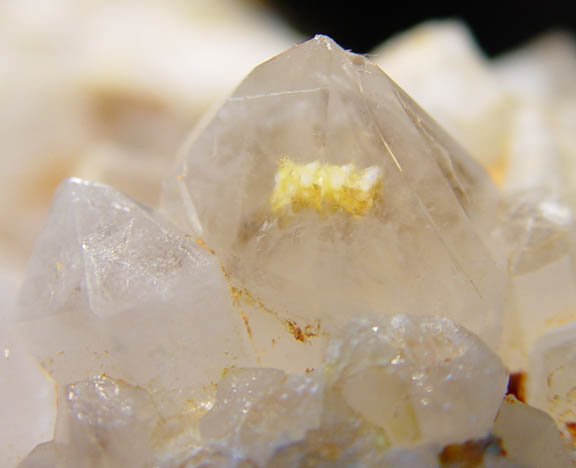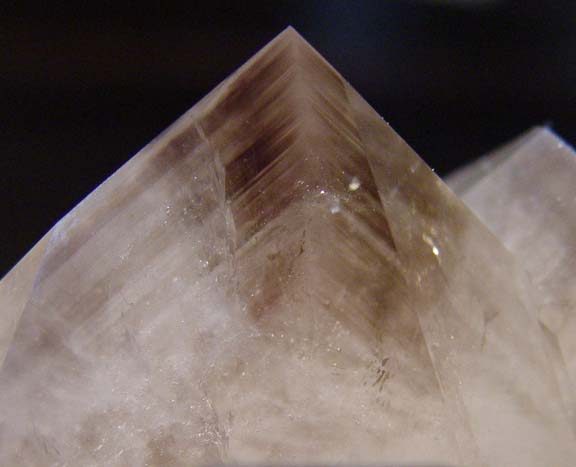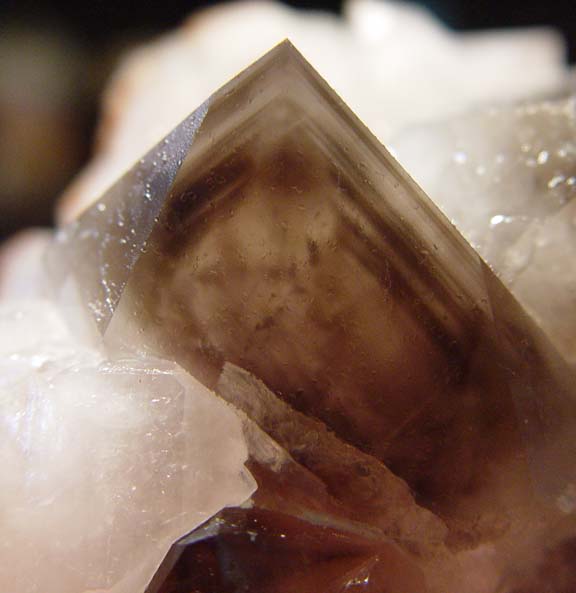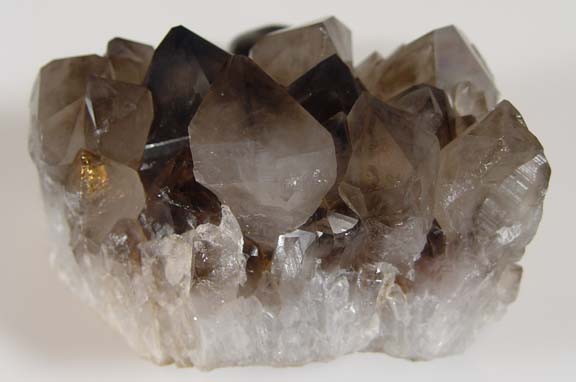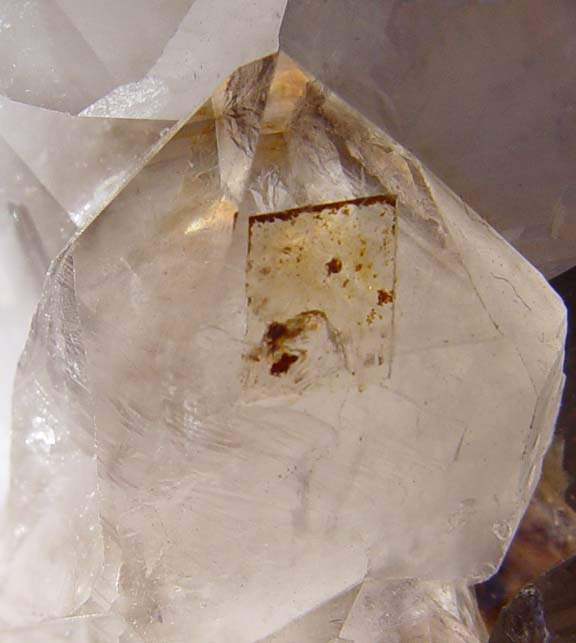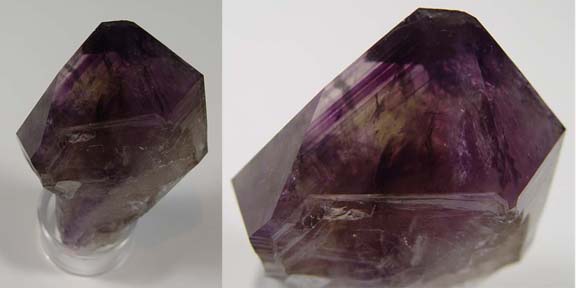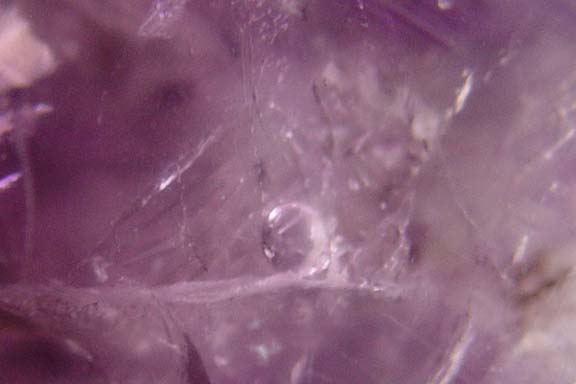Diamond
Hill Quartz Prospect
Antreville, South Carolina
Specimens with Inclusions
(All specimens collected by Richard Jacquot unless otherwise noted)
Pictured here are various specimens with different types of inclusions in the crystals. Some can be explained and some have not yet been identified.
Phantoms are usually composed of other minerals, aluminum, goethite, hematite. During the crystal growth, one of these secondary minerals penetrates into the silica mix during the early stages of the crystals formation, when the secondary mineral "retreats" or is no longer in the mix, the quartz crystal resumes its growth process enclosing the phantom crystal outline within itself. Multiple phantoms within a crystal are caused when the secondary mineral "pulses" in and out of the quartz crystal at different times during the growth process.
Enhydros or, bubble fluid inclusions, formed millions of years ago. During the crystallization process, the edges of the quartz form faster than the center. When this happens, channels form that trap the water or other foreign matter. When these channels were covered by more crystal growth, the captured water, etc. would cool and contract and a bubble would form in the liquid.
Quartz crystal with an unknown yellow inclusion
Collected in 2005
(Smoky Pit)
Crystal measures: 4 x 4 cm
Richard Jacquot photo and collection
|
_____________________________________________________
Smoky quartz crystal with multiple phantom inclusions
Collected in 2005
"Chunky Dave Pocket"
(Smoky Pit)
Richard Jacquot photo and collection |
_____________________________________________________
Smoky quartz crystal with multiple phantom inclusions
Collected in 2005
"Chunky Dave Pocket"
(Smoky Pit)
Richard Jacquot photo and collection |
_____________________________________________________
Quartz crystal with calcite? inclusion. In the top picture you can see the calcite crystal glowing a gold color in the lower left quartz crystal.
Collected in 2005 by John Deney
"Chunky Dave Pocket"
(Smoky Pit)
Measures: 11 x 7.5 x 6 cm
Inclusion/calcite crystal measures .5 cm
Richard Jacquot photo and collection |
_____________________________________________________
Amethyst crystal with multiple phantom inclusions
Collected in 2008
"Brockway Vacation Pocket"
(Amethyst Pit #2)
Measures: 11 x 7 x 3.75 cm
Richard Jacquot photo and collection |
_____________________________________________________
Amethyst crystal with multiple enhydro inclusions
Collected in 2008
"Brockway Vacation Pocket"
(Amethyst Pit #2)
Measures: 12.5 x 11 x 8.5 cm
Richard Jacquot photo and collection
Home |
|
